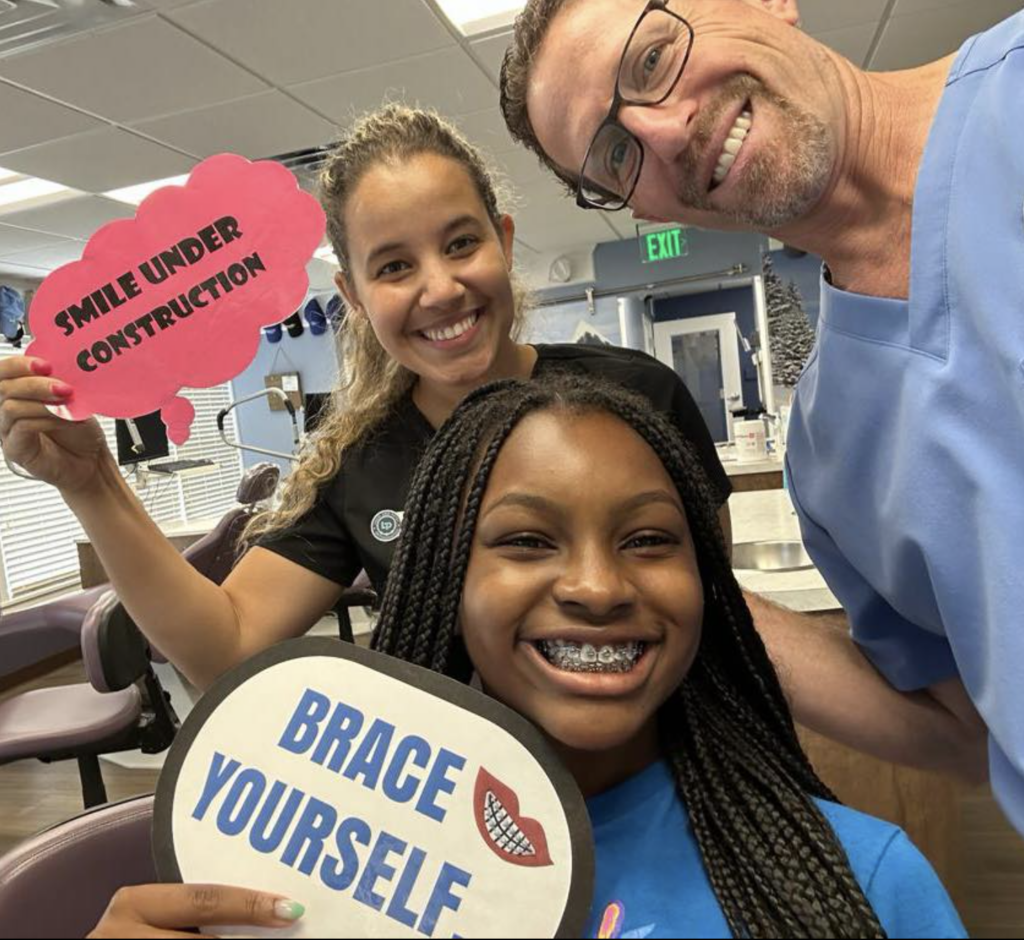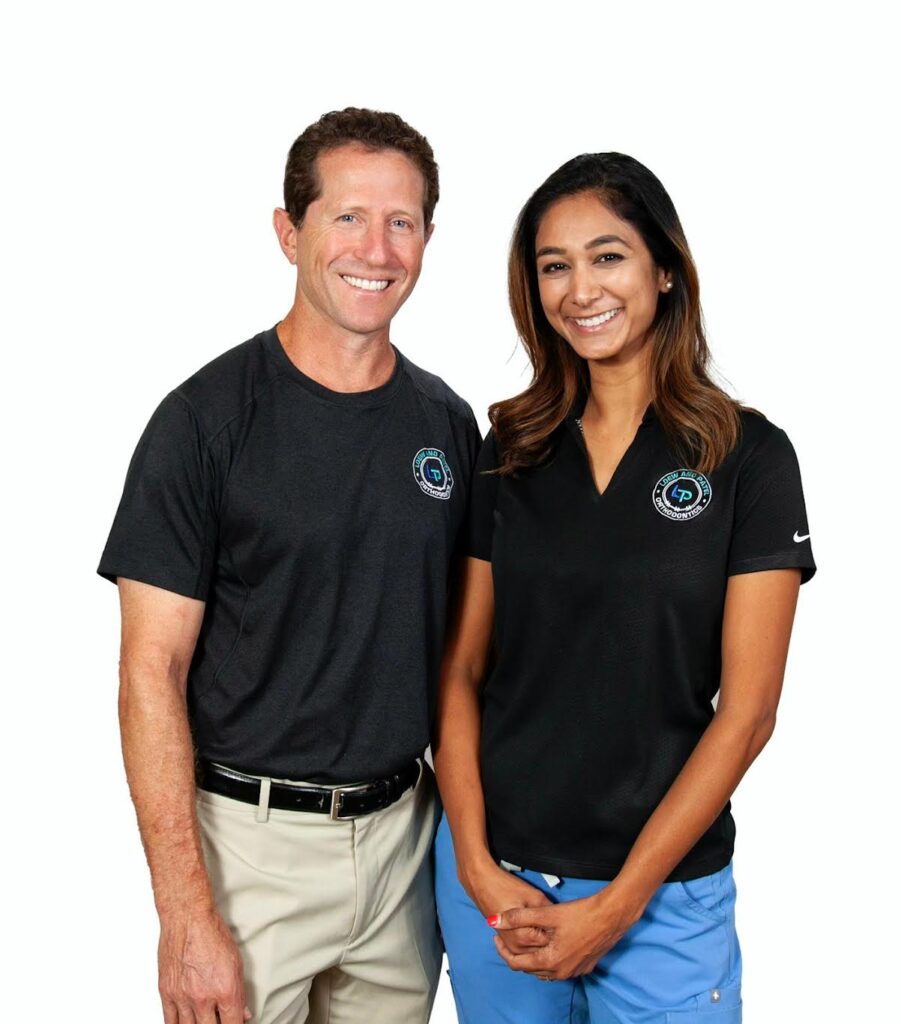Got braces, but are you having trouble brushing and flossing properly? Keeping your teeth clean is super important. But it can be a challenge when you have braces. At Loew and Patel Orthodontics in Flemington, Annandale, or Bridgewater, Dr. Loew and Dr. Patel know it might seem tricky to brush and floss with all that metal in your mouth. That’s why we’re here to help! We’ll show you the right way to brush and floss with braces so your smile stays bright and healthy while we work on making it even more awesome.
Understanding the Stakes
Keeping your teeth and braces clean makes you look good—that’s not a secret. But did you know it helps your overall dental health? Braces can trap tiny bits of food in hard-to-reach places. But that’s not the end. Trapped food causes plaque buildup. If not cleaned properly, this can cause cavities, requiring more fillings. Starting to notice a pattern?
Those same leftover food particles and plaque can irritate your gums. Irritated gums become red, swollen, and more prone to bleeding and disease. Healthy gums are important for mouth health. Good hygiene helps keep your braces in top shape. They can straighten your teeth effectively without unnecessary delays or repairs.
Tools Of The Trade
Having the right tools at your disposal is half the battle won. A soft-bristled toothbrush becomes your first line of defense. It’s gentle enough not to damage your braces. It’s also good at sweeping away plaque and food particles. Pairing this with fluoride toothpaste cleans and fortifies your teeth against decay.
Interdental brushes take cleaning a notch higher. They sneak into the nooks and crannies that a regular toothbrush might miss. Especially those around the brackets and wires. These tiny brushes are instrumental in dislodging stubborn food and plaque.
Flossing, though challenging with braces, is non-negotiable for complete oral care. Floss threaders become invaluable. A floss threader helps you thread the floss through the wires. Now, you can reach the gum line and spaces between your teeth. Water flossers offer a hassle-free alternative for those seeking a more advanced solution. They use a stream of water to flush out food bits and plaque from hard-to-reach areas.

Brushing Techniques With Braces
Brushing with braces requires more attention to detail than your standard routine. Here’s how to ensure you’re doing it right:
Start with a soft-bristled or electric toothbrush designed for braces. These are gentle on your brackets and effective at removing plaque. Hold your brush at a 45-degree angle to the gum line. This helps the bristles get under the wires and around the brackets.
Brushing Basics
Follow these steps to make sure every nook and cranny gets cleaned:
- For your upper teeth, angle your brush down. And for the lower teeth, angle it up. This technique ensures you’re covering all surfaces.
- Remember the inner surfaces of your teeth and chewing surfaces. Plaque hides everywhere!
- Brush for at least two minutes. Think about your mouth in four equal parts. Spend 30 seconds on each part.
Don’t Forget the Details
Paying attention to the small things can make a big difference in your oral hygiene:
- After brushing, rinse thoroughly with water. Then, look at your teeth and braces in the mirror to see if you missed any spots.
- Change your toothbrush or brush head every three months or sooner if the bristles become frayed. A fresh brush means better cleaning.
Dr. Loew and Dr. Patel at Loew and Patel Orthodontics emphasize the importance of these brushing techniques for all their patients. Proper brushing keeps your braces clean and ensures your teeth remain healthy throughout your orthodontic journey.
Flossing Made Easy
Flossing with braces might seem intimidating. But with the right tools and techniques, it can become an easy, streamlined of your daily hygiene routine. Traditional flossing methods sometimes work well with braces. But as you may have noticed, the wires block can block the floss. This is where floss threaders come into play. Floss threaders act as a needle to guide the floss under the wires and between the teeth. Here’s how to make flossing with braces easier:
Using Floss Threaders
Thread a piece of floss through the eye of the threader. Then, use the stiff end to pass the floss under the wires of your braces. Once the floss is in place, gently move it up and down along the sides of each tooth and under the gumline, just as you would without braces.
Water Flossers
Water flossers give you an alternative to traditional flossing. They use water to clean your teeth and around your braces. They are handy for those who need help with manual flossing. The water pressure can be adjusted to your comfort level, removing food particles and plaque without threading floss.

Glossing And Flossing At Loew And Patel Orthodontics
Keep brushing and flossing well, even if you have braces. Braces are not an excuse to scrimp on hygiene! Loew and Patel Orthodontics serves Flemington, Annandale, and Bridgewater. We can give you all the information and help you make your braces trip a blast! With the right tools and techniques, you can clean your braces and keep your smile healthy. Go here to schedule your free consultation with Dr. Loew or Dr. Patel.
